What are the Five Opportunities to Thrive for horses? As a horse person, you don’t just want your horse to live – you want them to thrive. Thriving means having your physical, mental, and emotional needs met so that you can have the most fulfilling life possible. For you, that might take many forms, but you know what it feels like: it feels great. To thrive is to have a great quality of life and experiences.
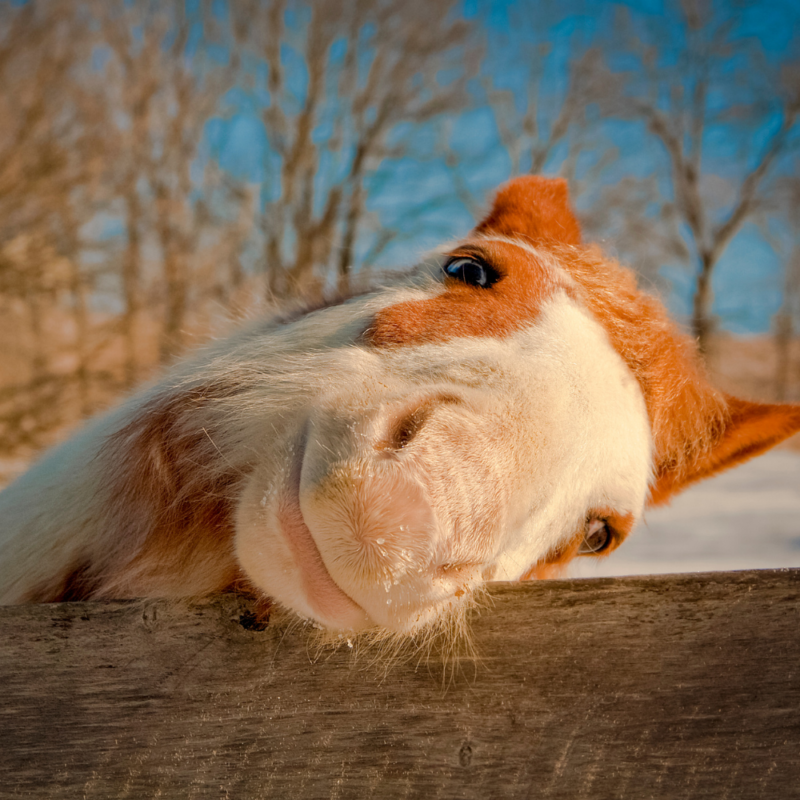
The Five Opportunities to Thrive is a model for determining an animal’s welfare. Understanding the Five Opportunities to Thrive and what they mean for your horse can help you improve your horse’s quality of life. So what are the Five Opportunities and what do they mean for your horse? Let’s find out.
What Are the Five Opportunities to Thrive for Horses?
The Five Opportunities to Thrive model was created for zoo animals and breaks down welfare in an easy-to-understand way. In this model, different parts of an animal’s experience are divided into categories. Each category is an Opportunity to Thrive, where your horse can experience a good or poor quality of life.
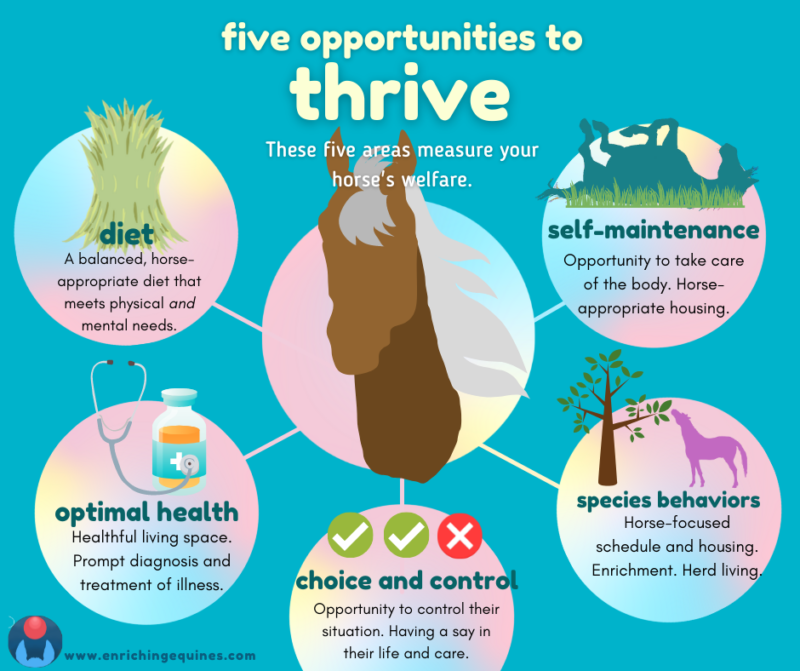
The Five Opportunities to Thrive are:
- The opportunity for a balanced, appropriate diet
- Opportunity to self-maintain
- The opportunity for optimal health
- Opportunity to express species-specific behavior
- The opportunity for choice and control
Each of these categories covers areas of how your horse is kept and how they feel and act. If you want to take a deep dive into your horse’s quality of life, the Five Opportunities to Thrive is where to start.
How Do You Use the Five Opportunities to Thrive to Measure Horse Welfare?
So how can you tell if your horse has the best welfare possible and is thriving rather than just existing?
Picture-perfect properties don’t always house horses with the best equine welfare. And a horse can be doted on by a loving owner but not have ideal housing or diet. A horse’s show record or pedigree can’t tell you whether an equine’s welfare is good.

Instead, use the Five Opportunities to Thrive for horses to look at your horse’s quality of life in a fair and accurate way. This model is used by professional animal caregivers to determine if they are providing good welfare. It helps you assess whether your horse is thriving in each of five different areas.
Comparing your horse’s life to the Five Opportunities can show you the areas that you’re excelling as a horse owner. You’ll also find areas where you can make changes to improve your equine’s quality of life.
Let’s begin with the first of the Five Opportunities to Thrive: a balanced diet.

Five Opportunities to Thrive #1: Optimal, Balanced Nutrition
This Opportunity to Thrive for your horse means that their food should be equine-appropriate and meet their individual needs. This means giving your horse a diet that is species-appropriate in appearance and meal schedule.

A horse experiencing this equine Opportunity to Thrive will be more physically and mentally healthy. Diet and feeding play a huge role in both health and mental wellbeing. As a result, a horse who doesn’t have an optimal diet can have health or behavioral problems.
The Right Diet
For your horse to thrive nutritionally, give them a diet that’s right for horses and for their own unique needs. A horse-appropriate diet is based on high-fiber, low-calorie forages. You can provide this by making sure your horse gets most of their calories from forage. This can be pasture, if that’s healthy for your horse, or as hay or hay products.
Then, if your horse needs extra calories or a different nutrient balance, add other foods like processed feeds, supplements, or fat sources.
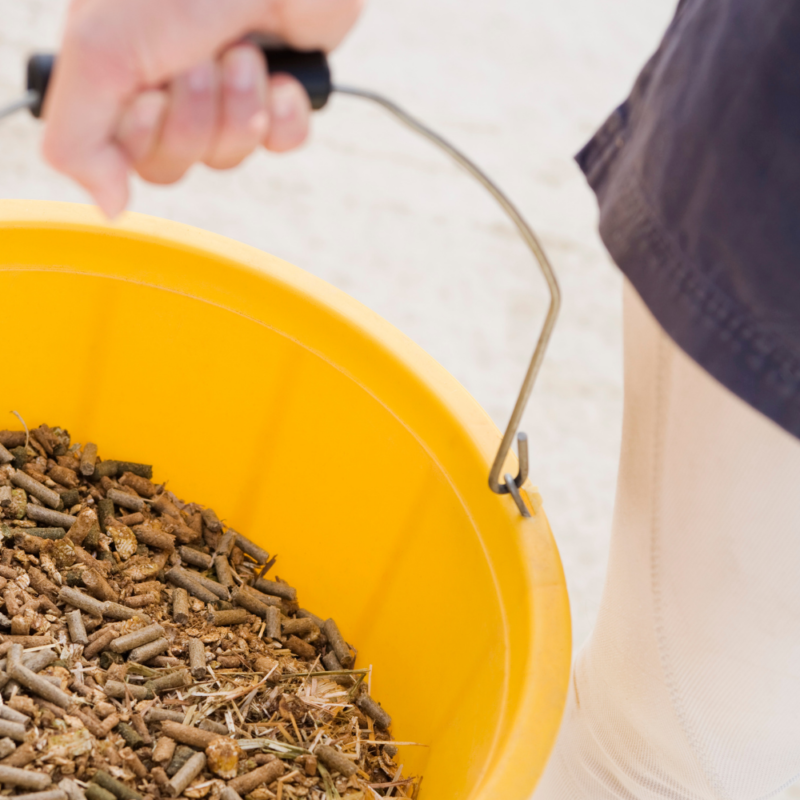
Every horse is different and their diet needs may change as they grow older or take on different riding roles. Your horse may only need a ration balancer or they might require large amounts of supplemental feed. Work with professionals like your vet and an equine nutritionist to create the diet that’s best for your individual horse, and update it frequently as their bodies and needs change.
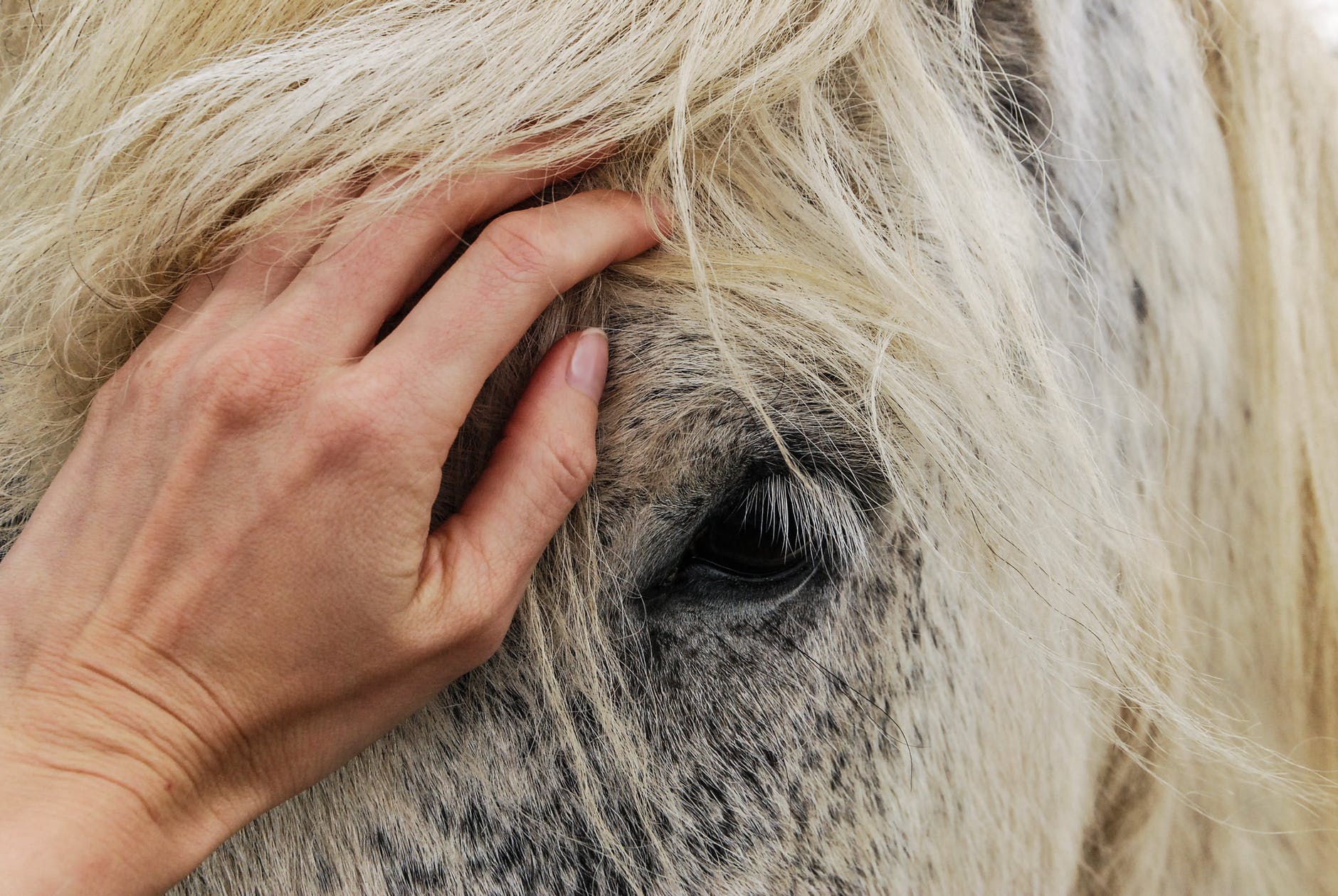
An optimal diet needs to be presented in a horse-appropriate way, and that includes almost constant grazing. Horses need to have a constant trickle of forage moving through their stomach for digestive and mental health. Slow-feed haynets and other feeding devices are a game changer for many horse owners and let you meet your horse’s digestive and psychological needs.

Five Opportunities to Thrive #2: Promoting Self Maintenance
Self-maintenance means being able to take care of your own body and mind. If your horse can’t perform the equine version of self-care, they won’t feel as good mentally or physically.
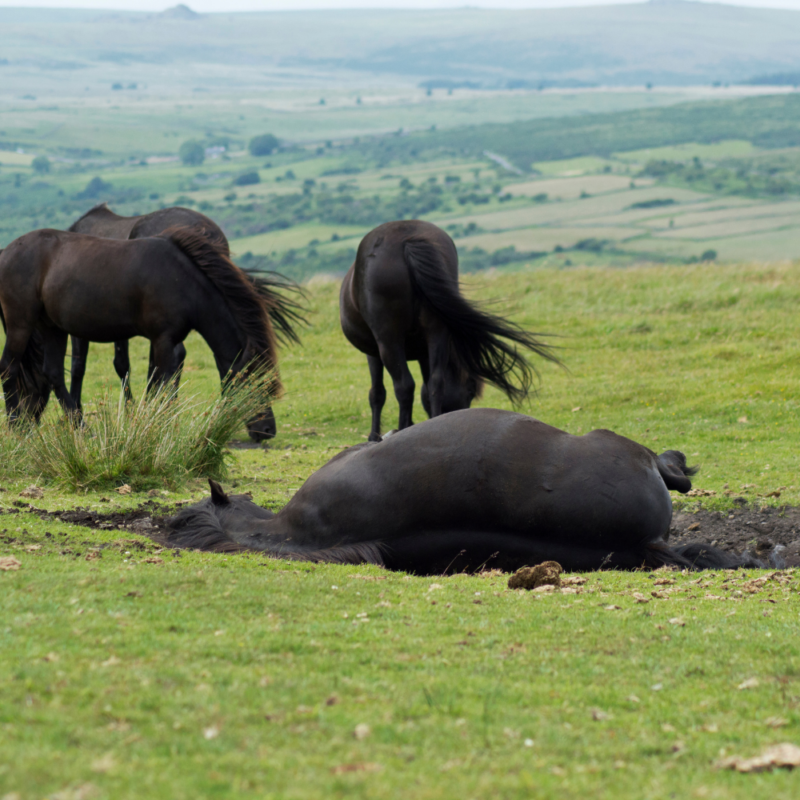
To provide this Opportunity to Thrive for your horse, give them plenty of ways to adjust or care for different parts of their body throughout the day.
Self Care and Your Horse
A complex environment with lots of room to roam is the best way to give your horse this Opportunity to Thrive.
Give your horse space, as much turnout as possible, in an area with lots of texture, different surfaces, and choices of shelter. They’ll be able to maintain their skin and coat by choosing where to rub and roll and get exercise to stay more coordinated and flexible. If you can, let them choose whether to take shelter during weather.
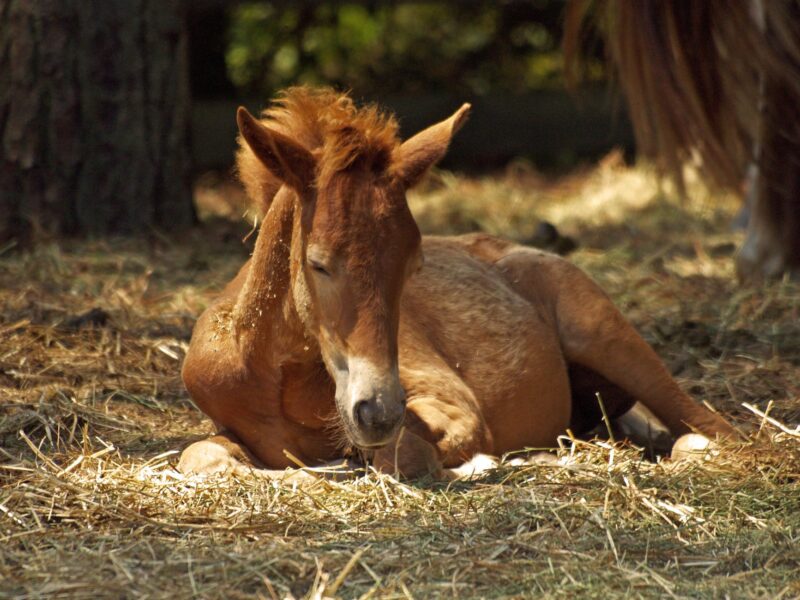
Photo by Hilary Halliwell on Pexels.com
The topic of turnout is a big debate, but almost all equestrians agree that more is better. One of the single greatest improvements you can make to your horse’s welfare is to offer them 24/7 access to turnout with their choice to shelter in a smaller area. This not only provides them with the opportunity to self-maintain, it enables them to thrive in other areas as well.
Next up is health and wellness.

Five Opportunities to Thrive #3: Health, Wellness, and Veterinary Care
Giving your horse the best chance at great health is humane and also helps your horse succeed in its job. From competition mount to backyard pet, health is crucial.
Provide the opportunity for optimal health by housing your horse in a safe space (again with lots and lots of turnout), providing that horse-healthy diet mentioned earlier, and by taking care of illness and injury immediately.
Health, Wellness, and Welfare for Your Horse
Every horse should have an annual physical so that a veterinarian can assess their health and compare it year to year for changes. The annual exam is also the time for your horse to receive vaccines against illnesses common in your area.
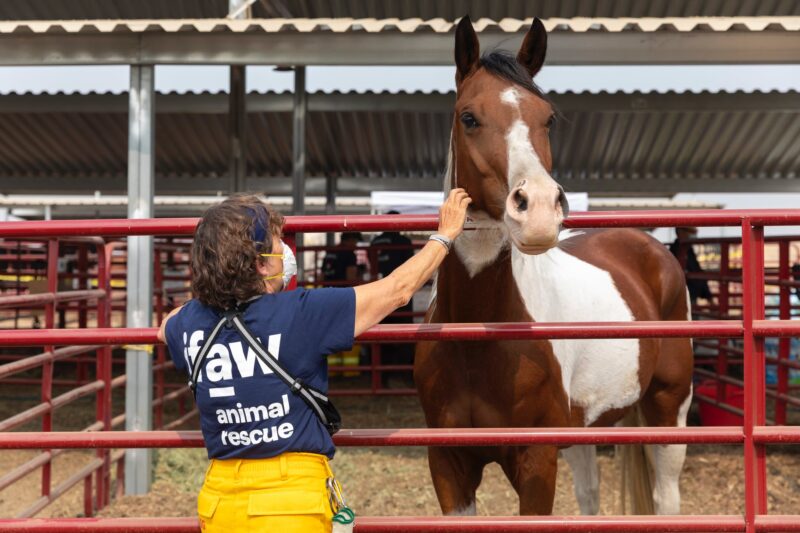
Your vet should also be your first contact outside of their yearly visit if you suspect something is wrong or if your horse is injured.
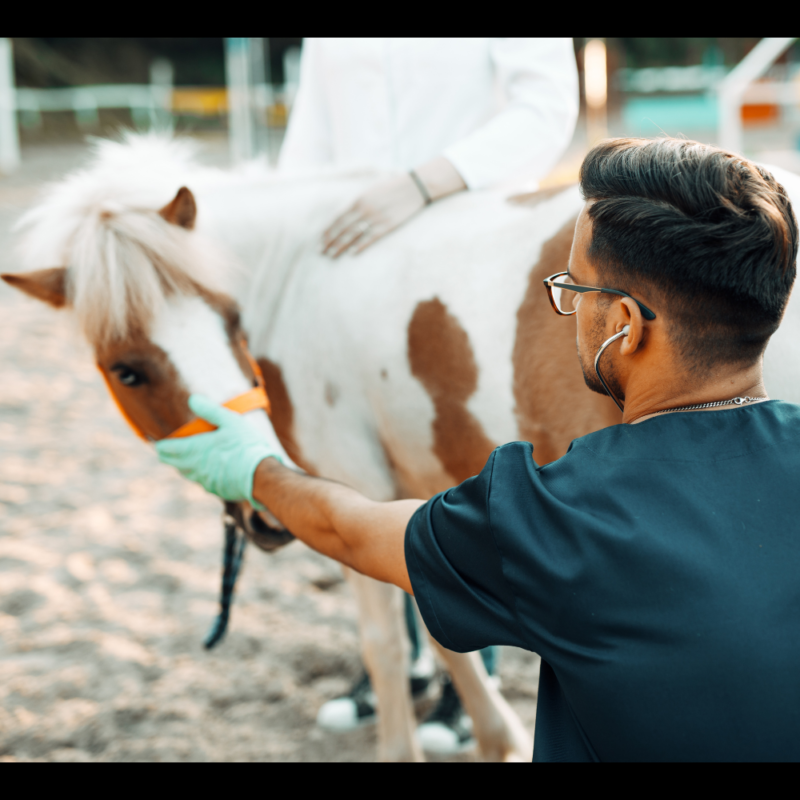
To give a horse the opportunity for optimal health, illness and injury should be attended to right away and not left to worsen or cause additional pain.
Your vet would much rather you contact them early rather than late, and it’s better to ring them up and have them reassure you that all is well versus not contacting them when there actually is a health problem.
Other Health Providers for Your Horse
Optimal health relies on other practitioners too. To give your horse the opportunity to thrive, make sure to bring in other professionals if needed for your horse’s care.
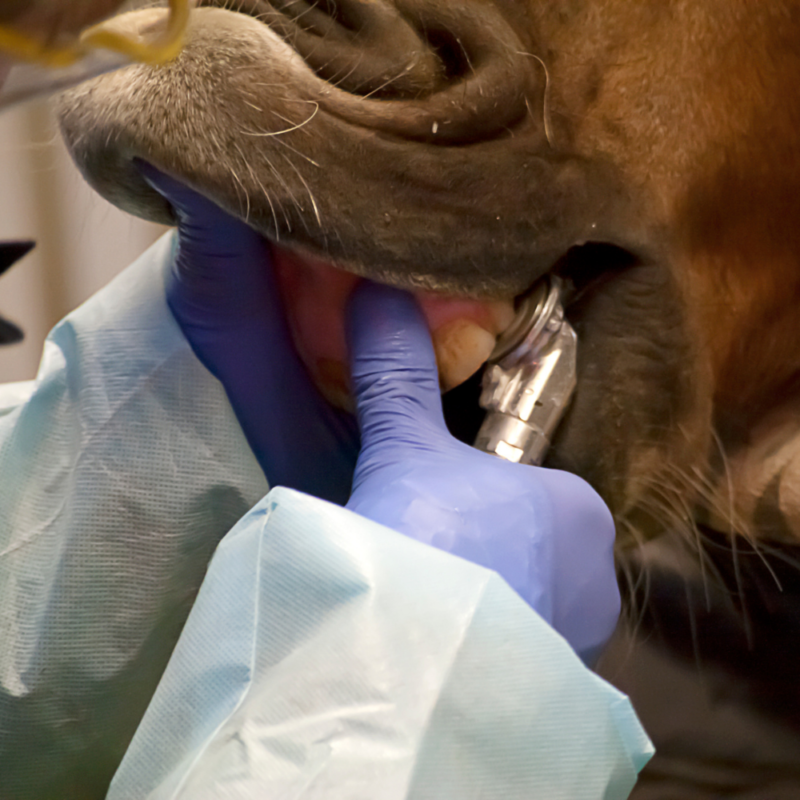
An equine dentist, qualified farrier or barefoot trimmer, chiropractor, and behavior consultant should be part of your horse’s care team. They should work together to provide your horse the Opportunity for Optimal Health.
When your horse has this Opportunity to Thrive, they’ll be as healthy and comfortable as possible. You’ll provide medications and supplements that care for long-term conditions, and you’ll set up their housing and diet in a healthy way. And when a problem happens, you’ll provide care right away.
The next Opportunity to Thrive is your horse’s chance to take advantage of their good health!

Five Opportunities to Thrive #4: Natural Behaviors for Horses
That’s a mouthful, but it boils down to this: let your horse be a horse.
Horses might be domesticated but they still have the physical and mental needs of their ancestors. To have the best welfare, your horse needs to move and act like a horse.
Sometimes their lifestyle with humans isn’t set up to promote this, including their housing, schedule, and diet. You can give your horse the opportunity to thrive behaviorally by encouraging them to do “horse things” both by themselves and with others.
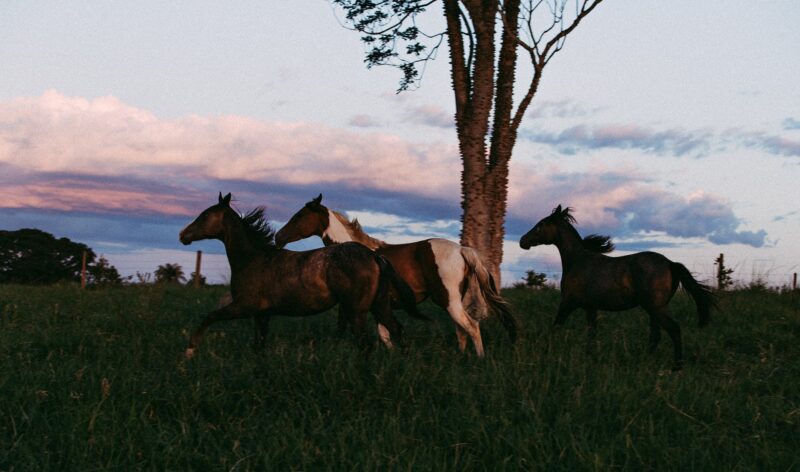
Photo by Helena Lopes on Pexels.com
Natural Equine Behaviors and Your Horse
Living outdoors in a herd is the best way to provide this opportunity to thrive, along with grazing 24/7. Herds don’t have to be huge, but having several horses together lets your horse express equine social behaviors and have a healthy “social life” just like you have.
24/7 forage access doesn’t have to mean ad-lib feeding or lush pastures; you can meet this need with haynets and other feeding solutions even for horses who shouldn’t have grass or unlimited food intake.

If you’re providing your horse with buddies and the opportunity to use a large space at all times, your horse is probably thriving in this area.
Fill the gaps and provide variety with equine enrichment. This gives your horse plenty of mental and physical stimulation and encourages natural behaviors. If you’re reading this article you’re on the right site! Browse through the blog for more information on how enrichment activities can give your horse a greater opportunity to thrive.
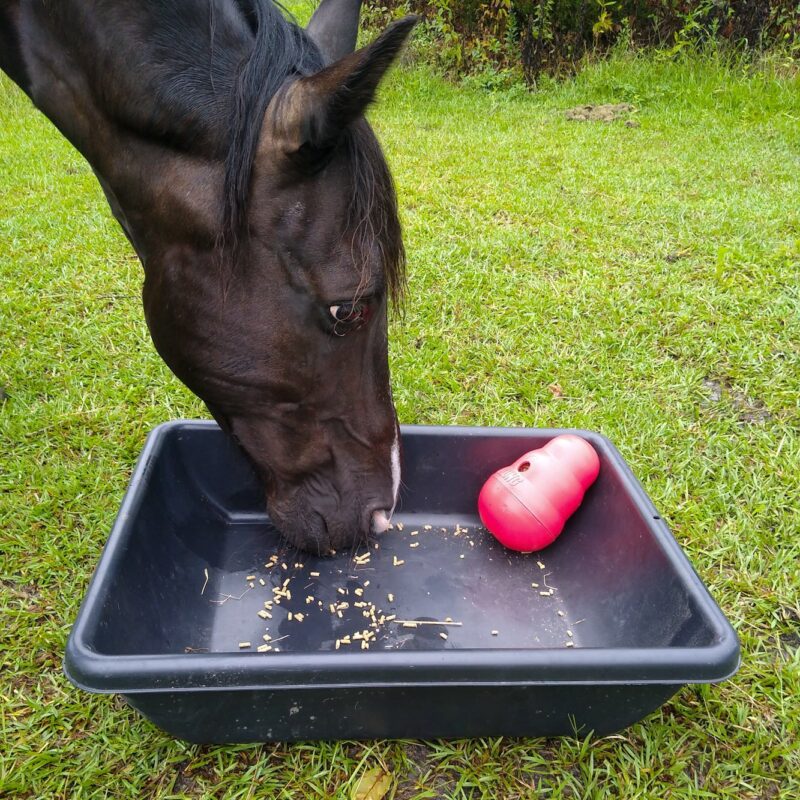
When your horse has the Opportunity to Express Behaviors, they’ll be able to move, interact, eat, and explore as they choose.
You’ll probably see your horse’s best temperament when these needs are met and your horse may have fewer physical and mental problems.

Five Opportunities to Thrive #5: Options and the Freedom to Choose
This is the opportunity that ties it all together: the horse’s chance to choose where to be and what to do.
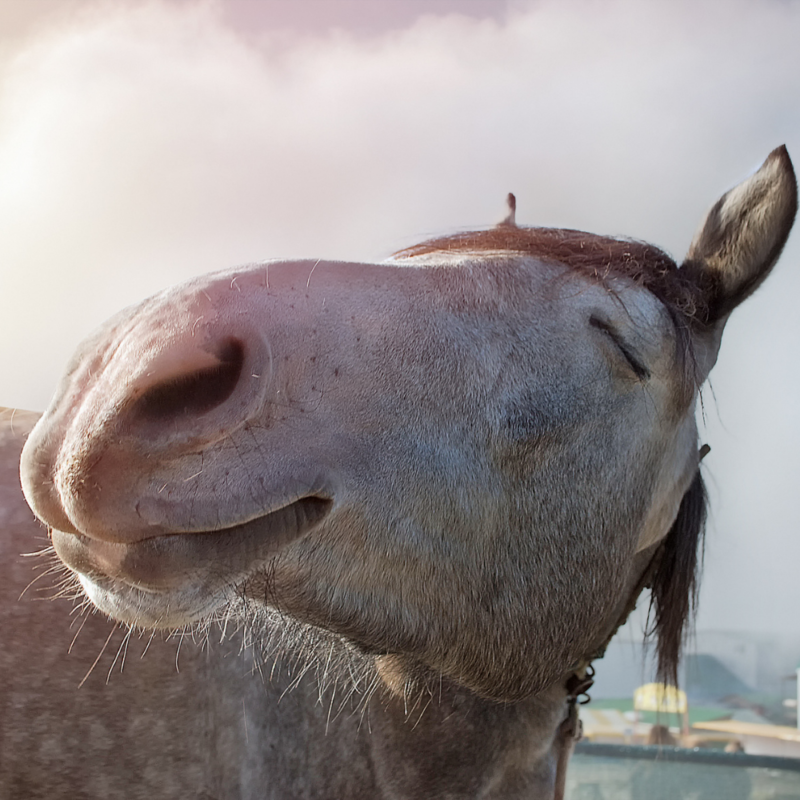
Choice and control is an important and often overlooked part of horse welfare. It lets your horse have agency and empowers them to adjust their own experience.
But most domestic equines don’t have as much choice and control as they would probably like, so how can you provide them with this opportunity to thrive?
Give Your Horse Choices
Prioritizing your horse’s choice and control over their situation can mean changing the way you interact with, train, and house your horse. To give them physical control over their environment, meeting the other needs above will go a long way. If they have full turnout in a complex space, they can choose what they want to do and what horses they want to be around.
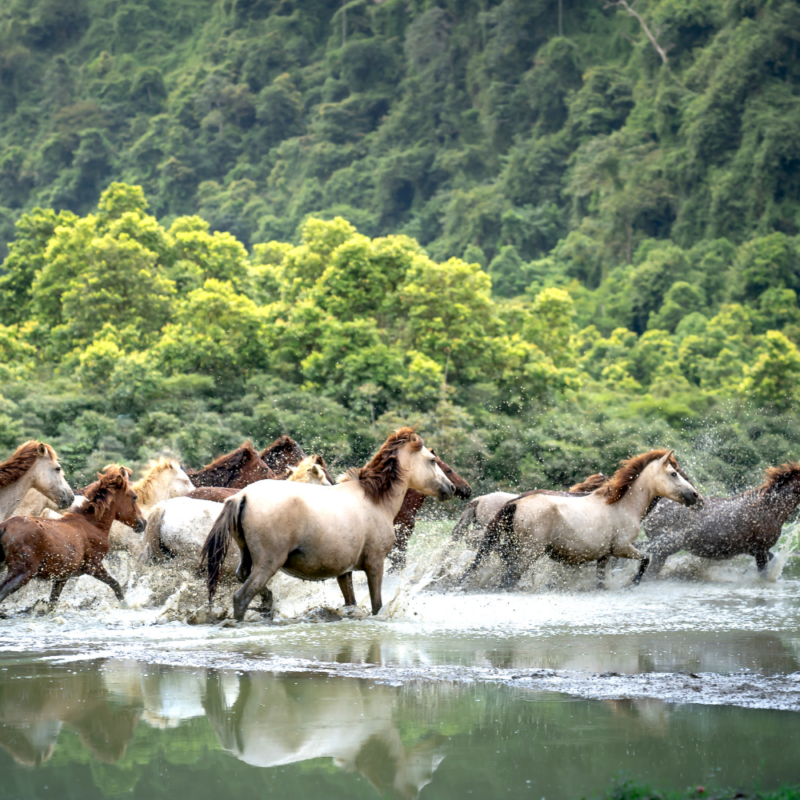
It’s important to acknowledge that most forms of riding and handling involve taking away some choice and control from the horse. It’s our job to make sure that our training and riding are gentle and humane. Riding is a part of your horse’s welfare.
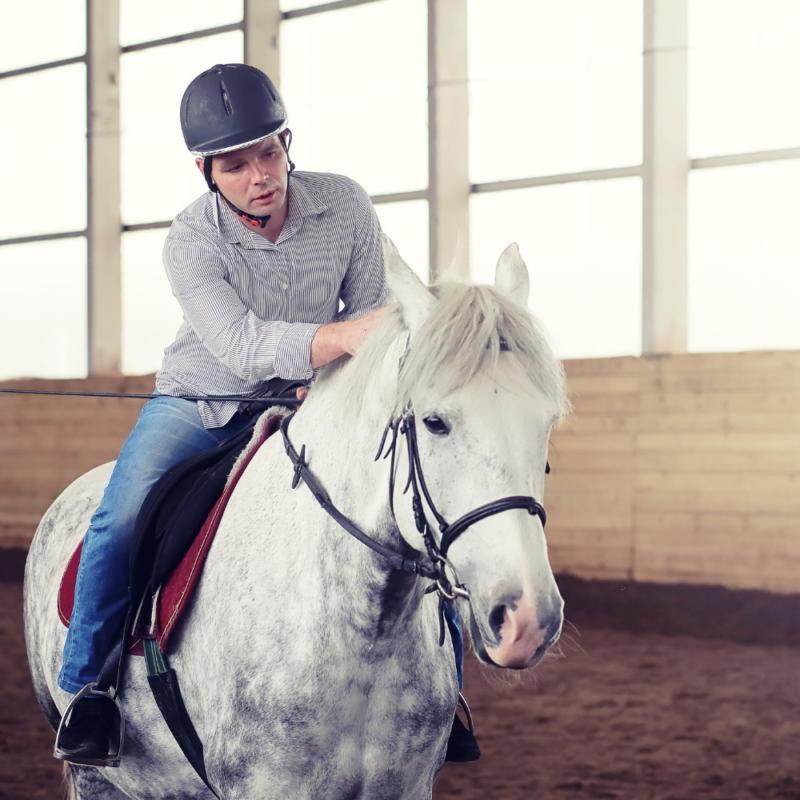
If a horse seems unhappy with the amount of choice and control they have, it’s important to listen. Acting out, bad behaviors, or a sour attitude are ways that horses communicate. To raise your horse’s level of welfare, let them have more choice in the riding process and always investigate the causes of unwanted behavior.
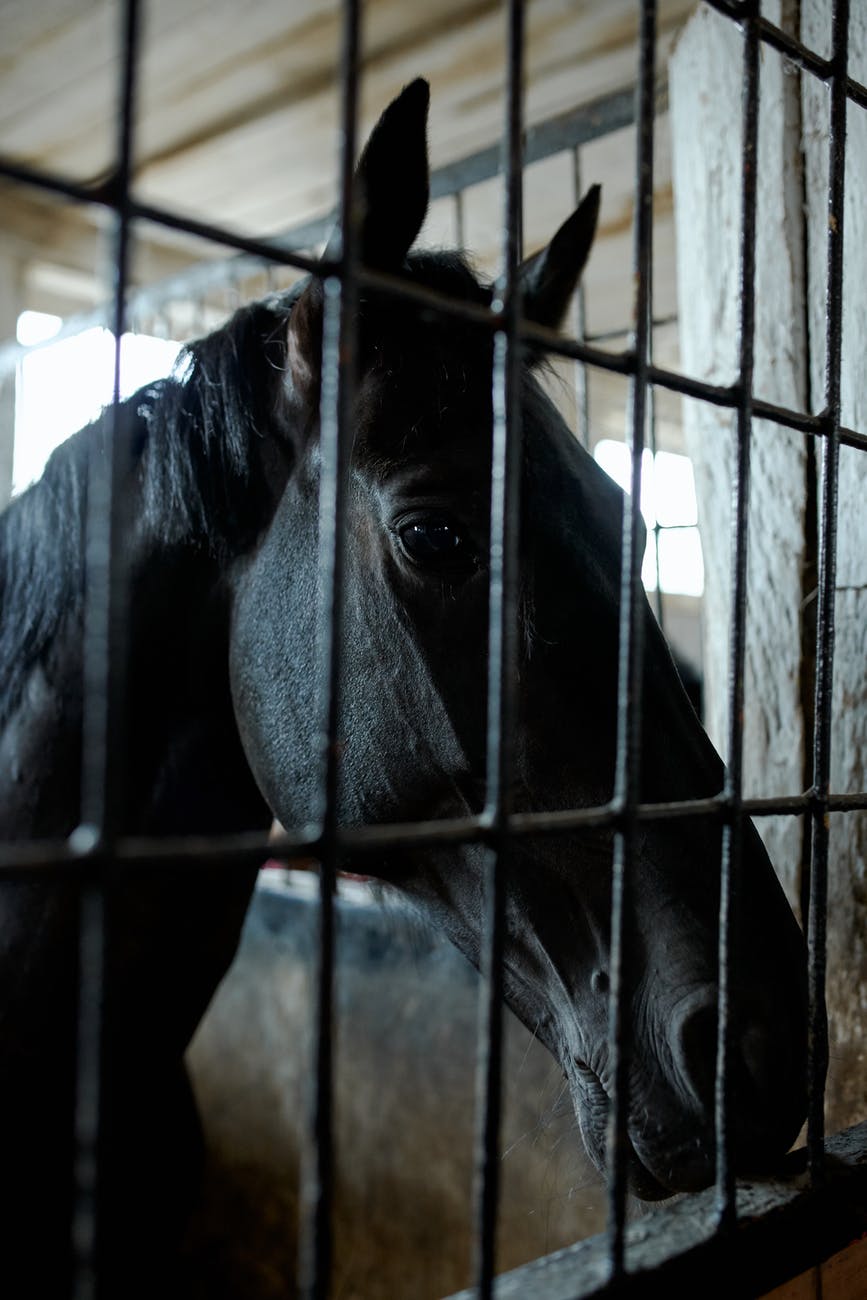
Photo by Tatiana Twinslol on Pexels.com
A growing number of equestrians use cooperative care and positive reinforcement to make handling, caregiving, and riding simpler for everyone. It’s possible to have a great relationship with your horse that involves letting them make more decisions and respecting them when they say “no thanks.” And reward-based training makes it much more likely that your horse will say “yes!” enthusiastically, even for difficult or scary requests.
The Five Opportunities To Thrive and Your Horse: Putting It All Together
Take a look at each of the Five Opportunities and think about your horse’s lifestyle. Your horse will have a different lived experience in each of these areas because every horse and equestrian is unique. There may be some areas in which your horse is truly thriving, and some places that you want to improve.
For example, some horses have a perfectly optimal diet but don’t have much choice and control in their lifestyle. Other horses may enjoy a wide-open, complex space and herd environment but not have regular veterinary care. What are your strongest areas? What are your weakest ones?
That’s why dividing up these aspects of welfare is so useful: it lets us take a deep dive into the welfare of our equine companions and examine each part of their life separately. The Five Opportunities also makes it easy to set meaningful, achievable goals for your horse’s care.
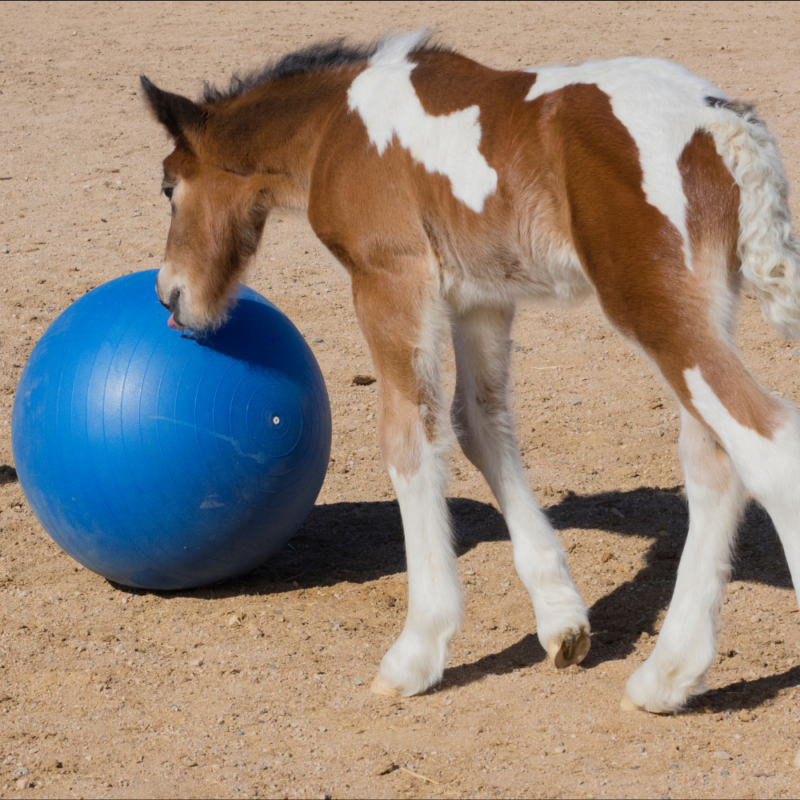
These improvements can look different for each horse and owner since our situations are unique, but they all have one main goal: giving your horse the best quality of life you can provide. It’s just one way that we can help our horses not just live, but really thrive.
As always, check out the Enrichment Ideas pages and previous posts for lots of fun equine enrichment ideas!
References:
Janssen, D. L., Miller, L., & Vicino, G. (n.d.). Animal Welfare and Behavior: Opportunities to Thrive – AAZV 2014 https://www.vin.com/apputil/content/defaultadv1.aspx?pId=12132&catId=155753&id=9948728.
Pingback: Rolling Rubber Treat Ball for Horses [Upcycle] [Video] - Enriching Equines